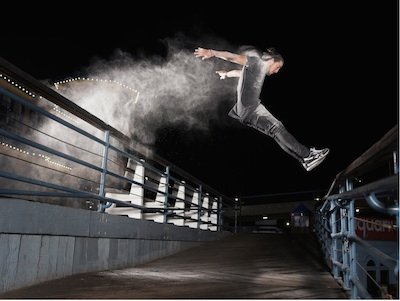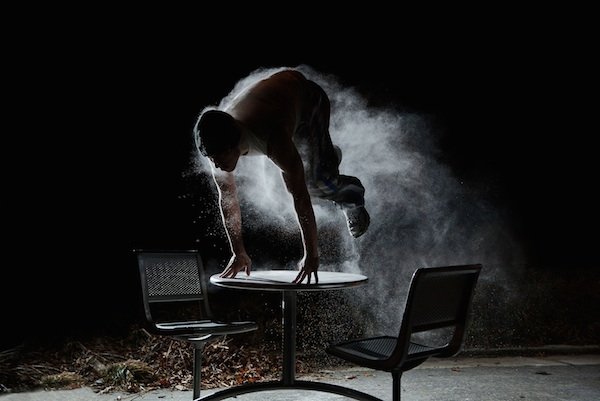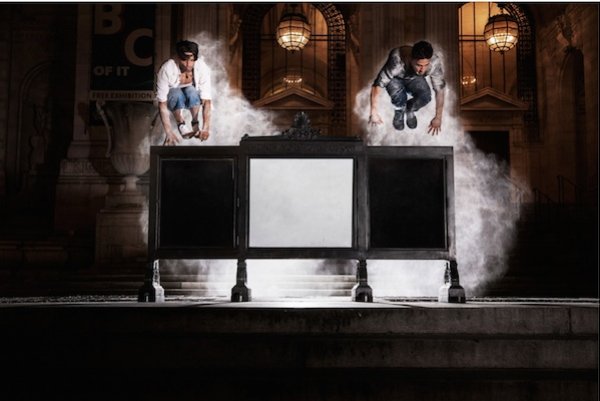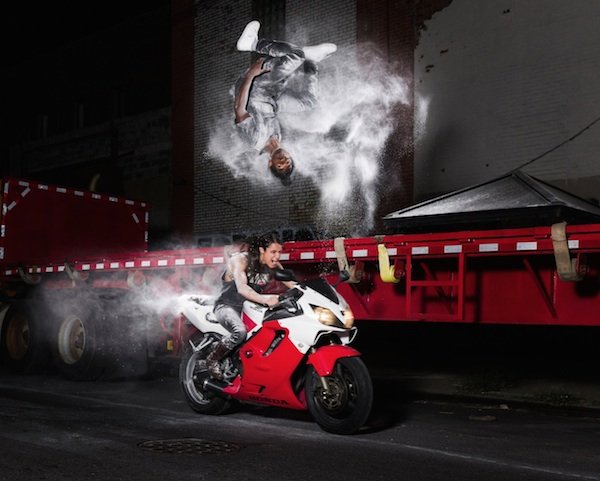Photographer Profile - Ben Franke: "With parkour, the whole city becomes your playground"

|
|
|
Even parkour aficionados are somewhat perplexed by its nature. “Is it a sport? Or an art? Or a philosophy perhaps? Or maybe it is better termed a discipline?” asks the website Parkour Generations.
The word itself comes from the French “parcours,” which literally means “the way through,” or “the path,” notes the World Freerunning Parkour Federation. Its history can be traced back to the 1902 eruption of Mount Pelée in Martinique. There, French naval officer Lt. George Hebert aided in rescue efforts, during which he noted how people moved around and over obstacles. He went on to develop a physical training regimen called “the natural method” that made use of man-made obstacles, and his ideas later became the basis of a training program for the French army known as “Parcours du combattant,” or “The Path of the Warrior.”
Another Frenchman, David Belle, is credited with inventing what we now call parkour, a sport — or art — in which people move from one point to another using obstacles to increase their efficiency.
In 2010, a New York University photography student named Ben Franke began watching parkour videos on the Internet and was fascinated by what he saw: People bouncing off walls, flying over stairways, and spinning around ledges.
“I thought it was really interesting to see people move around like that,” Franke says. “It’s not just the athleticism that I responded to; it was the freedom of the movement. There’s this sense of freedom in what they do. I was looking for a project to do for school, and thought, ‘Okay, let me try photographing this.’”

Today, Franke may be the world’s best known parkour photographer. His work became a hit online after being discovered by bloggers in 2014 and went on to be featured in the New York Times and other publications. More recently his parkour photography earned him a spot in the American Photography annual.
The key to his success was an idea he had three years ago. Until then, Franke says, his pictures never captured the one fundamental aspect of parkour: its movement. “The camera would freeze the athletes in the air, but that didn’t give you any idea of how they got there,” he says. He found his solution by coating his subjects in flour. In his pictures, the flour leaves ghostly visible evidence of their moves. It was a graceful solution to a basic photographic hurdle — how to present a before and after in a still image.
“[W]e’ve never seen the sport’s potential for poetry, precision and power like this before,” noted the Huffington Post.
The Path of Movement
“What inspired me to try the flour idea is that I’d seen videos of the Indian Holi festival, where people cover themselves with colored powders,” Franke says. “I’d also seen dance photography done in similar ways, where someone is jumping and powder goes everywhere. I thought about taking the idea outside and not only showing the energy of the movement, but also the path of the movement.”
Franke has worked with a number of parkour athletes, many from a parkour club in Brooklyn. “I started out by just emailing some of them, and then I went to one of their training sessions,” he says. “I kept in touch, and they just kept inviting me back.”

One of the interesting visual aspects of Franke’s photos is that they are shot at night with flash, which isolates the athletes and accentuates the flying flour. Also
interesting are the locations Franke shoots at — rooftops, street corners, and other areas of New York where interesting obstacles can be found.
“With parkour, the whole city becomes your playground,” says Franke. “If you photograph a basket ballplayer, you need a basketball court. Shoot a soccer player, and you need a soccer field. With these guys, you explore the city and see the city in a different way. Sometimes the athletes suggest a spot, or I will see a place that I think looks interesting. I try to make the process a collaboration.”

Many of his images were shot with a Canon 5D Mark II and a 24-70mm lens and lit with a Canon Speedlite 580EX II flash with an umbrella and a reflector for fill. Franke has also been shooting with a Leica SL; his work was recently exhibited at the Leica Gallery in New York.
“The gear isn’t incredibly complicated,” he says. “When I’m out shooting, it’s just me and
the athletes and maybe one of their friends.”
The Next Logical Step
Franke grew up in Heidelberg, Germany, but went to high school near Baltimore, Maryland, which is where he developed his interest in photography. “The school had a photo program and I signed up and fell in love with it,” he says. “I spent hours in the darkroom. We had a great library of photography books and there were lights to play with. That led me to going to NYU to study photography.”
His life changed when his parkour photos were discovered by bloggers. “The work just took on a life of its own,” Franke says. Now he’s seeing how far he can take his parkour project. “I’m trying to build it out,” he says. “I want it to be representative of the entire parkour community, which means traveling to different American cities — I was recently shooting in Los Angeles and Miami — and to Europe, Australia, Russian and Asia.”
Franke is also looking beyond photography and has begun working in video. “This is all about motion, so it seemed like the logical next step,” he says.
He had already been experimenting with video when he got a call “out of the blue” from Samsung. “Someone had seen my photography online, and they wanted to know if I was interested in shooting video with one of their cameras,” he says. "We talked about different concepts and decided to try creating a video using the same flour technique I’d been using in my photography.”
The result was a minute-and-a-half-long video shot with the Samsung NX1 that featured parkour athlete Jesse La Flair. The video was chosen as a winner of the 2015 International Motion Art Awards.
The success Franke has had illustrates how quickly the Internet can boost a creative project. “The most rewarding part of this series has been the reaction from the athletes themselves,” he said in an interview. “I felt we were all equally excited about this project from start to finish.”


